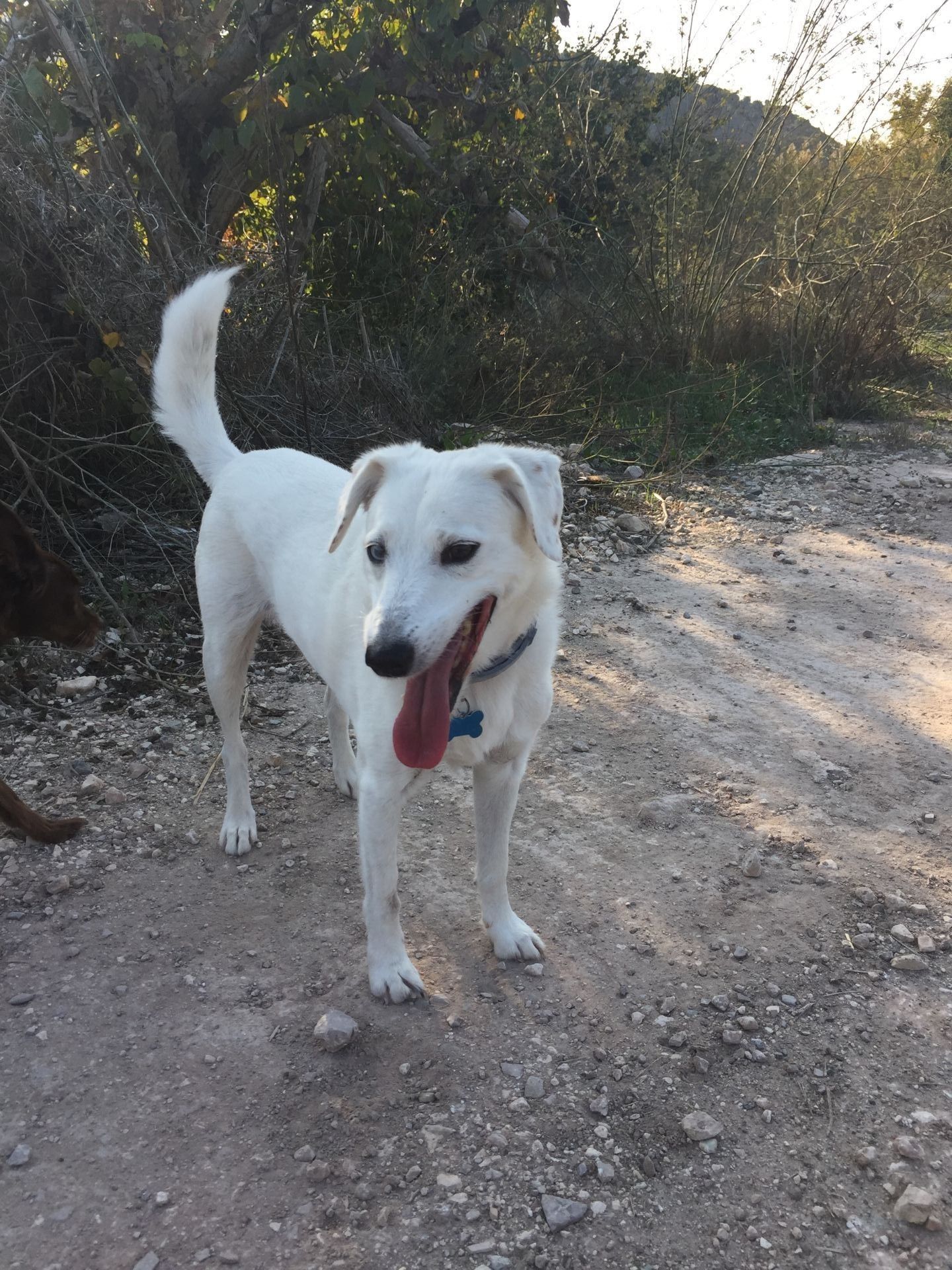
Meet Bo. Bo is eleven now and was deaf from the moment his little body entered the world. He is a Parson Russell Terrier, has one blue eye and carries the genetic mutation commonly known as the Merle gene. This is responsible for his hearing impairment. Over the years, many people have asked if I am sure that he is deaf, clapping above his head to see if there was a reaction, or assuming he must be blind in his blue eye too. He attracts attention due to his difference and it is a talking point when people notice I communicate with him through sign language. He is probably the most intelligent dog I have ever shared my life with.
He really is super smart, extremely fast and almost intuitively aware of what is going on around him. If you didn’t know he was deaf, you probably wouldn’t notice any difference between him and a hearing dog.
Bo is aesthetically pleasing (I know I am biased). He looks outwardly normal, moves normally, behaves appropriately and so people assume he is ‘normal’. Yet what about when we see a dog missing a limb, or part of a jaw, or a dog who is blind due to bilateral enucleations (eye removal). What do we feel towards that dog then?
When the outward appearance is different, there is a human tendency to view them differently. Sanura Taylor writes: ‘Many of our ideas about animals are formed by our assumption that only the fittest animals survive, which negates the value and even naturalness of such experiences as vulnerability, weakness, and interdependence.’ (Taylor, 2017:26).
This makes the assumption that disabled dogs are unnatural and less worthy.
Research shows that primates, elephants, geese and many other species learn to adjust and make allowances for less-abled members of the group. Marc Bekoff decided that this adaptive behaviour made no practical sense, and therefore that they must have cared for and demonstrated empathy towards the less able animal. Frans de Waal calls this a process of ‘learned adjustment’ where the healthy members of a group don’t necessarily know what is wrong but do notice how the disabled animal does things differently, and they become familiar with this and begin to support and protect them. He goes on to explain that there is a strong attachment to their friend too and so a combination of learned adjustment and attachment is what creates a cognitive empathy.
Back in the world of dogs, I have noticed few less-abled dogs. I wonder how many are euthanised rather than being allowed to survive as a less-abled pet, or how many get overlooked at the shelter. There is also a real lack of research into the impact of disabilities on dog behaviour. There is a human narrative that suggests that disable dogs should be considered as pets out of an act of compassion or sympathy, and another that claims that they have less happy lives, are harder to care for and should be avoided. Our ableist stereotypes are carried over into who we choose as our companion animals.
He really is super smart, extremely fast and almost intuitively aware of what is going on around him. If you didn’t know he was deaf, you probably wouldn’t notice any difference between him and a hearing dog.
Bo is aesthetically pleasing (I know I am biased). He looks outwardly normal, moves normally, behaves appropriately and so people assume he is ‘normal’. Yet what about when we see a dog missing a limb, or part of a jaw, or a dog who is blind due to bilateral enucleations (eye removal). What do we feel towards that dog then?
When the outward appearance is different, there is a human tendency to view them differently. Sanura Taylor writes: ‘Many of our ideas about animals are formed by our assumption that only the fittest animals survive, which negates the value and even naturalness of such experiences as vulnerability, weakness, and interdependence.’ (Taylor, 2017:26).
This makes the assumption that disabled dogs are unnatural and less worthy.
Research shows that primates, elephants, geese and many other species learn to adjust and make allowances for less-abled members of the group. Marc Bekoff decided that this adaptive behaviour made no practical sense, and therefore that they must have cared for and demonstrated empathy towards the less able animal. Frans de Waal calls this a process of ‘learned adjustment’ where the healthy members of a group don’t necessarily know what is wrong but do notice how the disabled animal does things differently, and they become familiar with this and begin to support and protect them. He goes on to explain that there is a strong attachment to their friend too and so a combination of learned adjustment and attachment is what creates a cognitive empathy.
Back in the world of dogs, I have noticed few less-abled dogs. I wonder how many are euthanised rather than being allowed to survive as a less-abled pet, or how many get overlooked at the shelter. There is also a real lack of research into the impact of disabilities on dog behaviour. There is a human narrative that suggests that disable dogs should be considered as pets out of an act of compassion or sympathy, and another that claims that they have less happy lives, are harder to care for and should be avoided. Our ableist stereotypes are carried over into who we choose as our companion animals.
